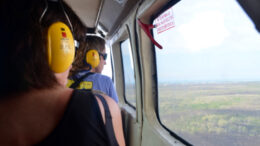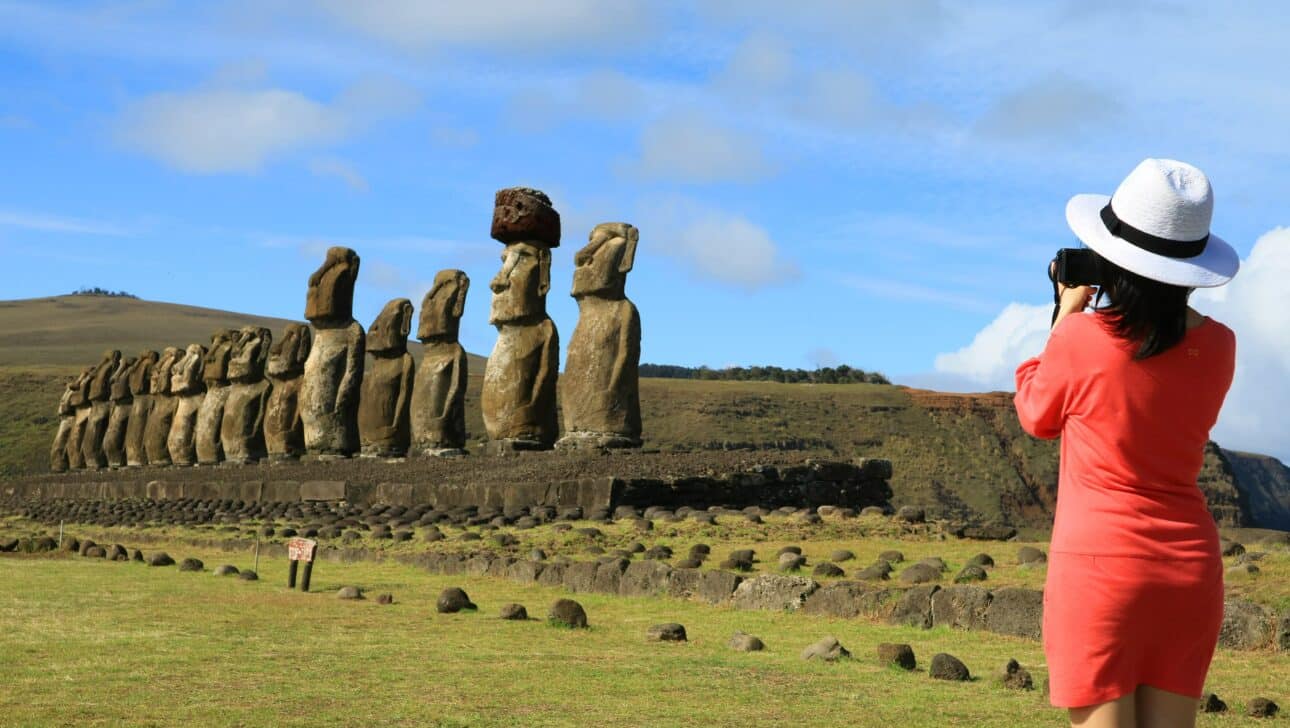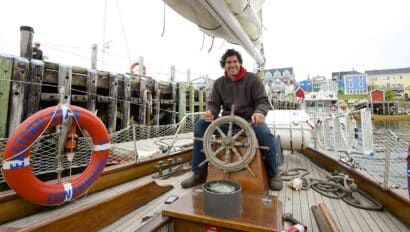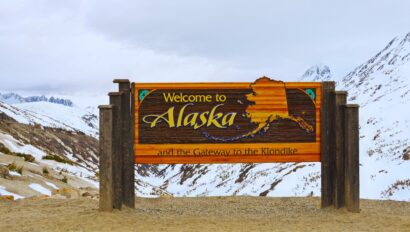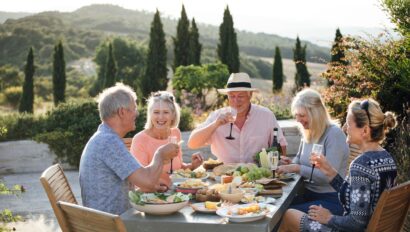On a map, Chile appears to be an easily dismissed, tiny strip of a country dwarfed by Argentina and Brazil. But true travelers know that this hospitable South American country holds endless lure, from the serene and expansive moonscape of the Atacama Desert on down to majestic and jaw-droppingly picturesque Patagonia where bright pink flamingos flock in front of the towering snow-capped Andes. For those wanting to immerse themselves further in mystery and lore, a jaunt to enigmatic Easter Island is in order.
After flying from Santiago, visitors upon arrival feel like they have entered a different era. Easter Island, or “Rapa Nui” in the native Polynesian language, is a remote UNESCO heritage site famous for its 887 surviving monumental statues called “Moai“. But there is so much more to this tranquil island than the statues. Imagine magnificent volcanic geology to explore, warm transparent waters on a white-sand beach to relax into, and a ceremonial village that is the perfect place to learn more about the traditional Birdman Cult. This amazing island continues to impress, as another moai was recently discovered in a dry lake bed by archaeologists.
Easter Island’s Mysterious Statues: The Moai
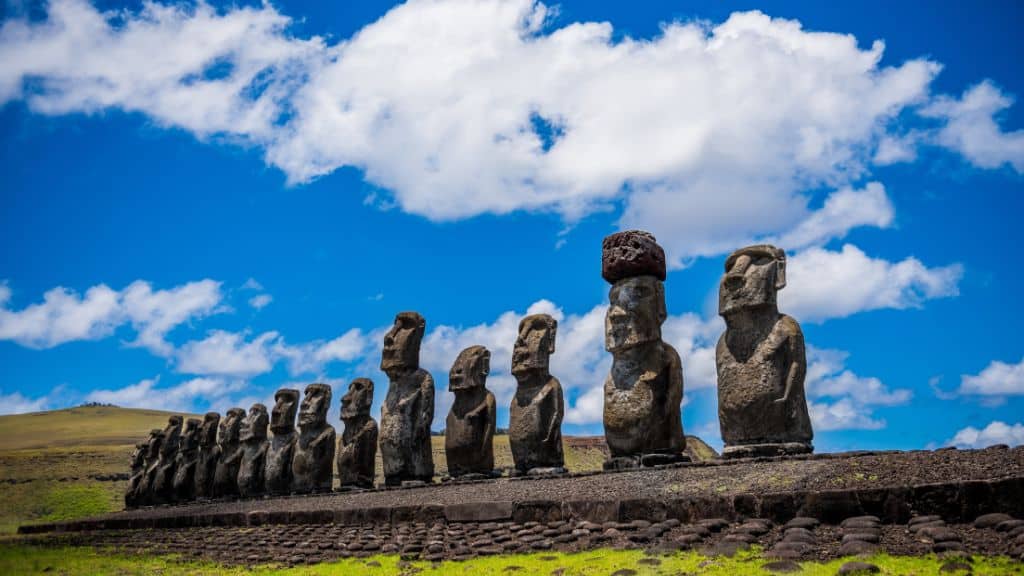
The moai are enormous statues with prominent heads erected hundreds of years before the first Europeans arrived on the island in 1722. The original Rapa Nui people who came from Polynesia around A.D. 1000 may have built the moai to temporarily house the spirits of their ancestors, as the ahu platforms upon which they stand were once the sites of death rituals (excavations have unearthed human remains, both cremated and buried, at sites). Essentially the statues may have served as containers into which spirits could be captured and held safe so that they could continue to help the living that were left behind – a practice that is also found in some traditional Polynesian religions.
On this remote island nearly 2,300 miles west of South America and 1,100 miles from the nearest island, the Rapa Nui chiseled away at volcanic tuff, a porous stone made of solidified ash, from an extinct volcano called Rano Raraku. Their process was incredibly secretive, but it’s thought that the carvers would begin working on the front and sides of a statue, then slowly separate the back from the quarry rock. The statue would then be moved downhill and placed upright in a hole, where the carvers would finish its back and add petroglyphs to its surface. The largest discovered moai, aptly called “El Gigante,” never actually made it out of Rano Raraku, the quarry on the island’s south shore where the statues were built. This beast is 69 feet tall and is thought to weigh about 200 metric tons.
The moai that visitors see standing today were all toppled down during a civil war that went on for years on Easter Island. They have been re-erected by explorers and archaeologists, but the original upright moai and the method of erection are lost to us forever. Only researchers are allowed to touch the moai – tourists are forbidden from touching them and this is taken very seriously on the island (a Finnish tourist was recently fined $17,000).
Feel The Heat at Poike Volcano
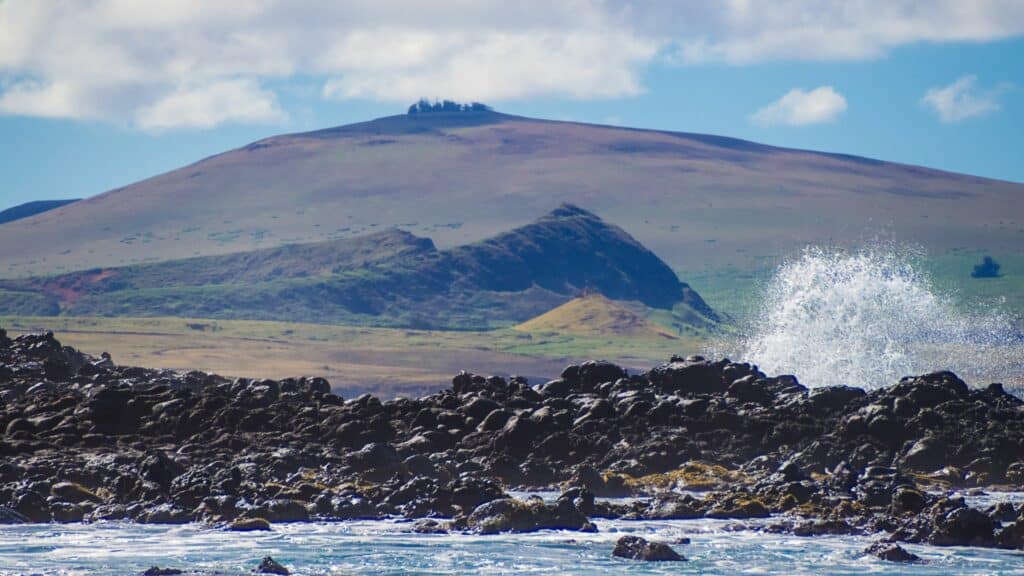
Also waiting to be explored is Poike volcano, which erupted three million years ago and formed the island. To get here, we follow a rugged coastline that passes many ahu ceremonial site ruins and continues through the historical Rano Raraku quarry.
Once by Poike, there is a large face carved into a rock that was used in rituals that pertained to water. Along the northeast of the peninsula, on the cliff of Poike volcano, there is Ana o Keke, an ancient cave where virgin women were said to be kept in order to purify their souls and conserve their light skin. The cave, commonly known as the “Cave of the Virgins,” has become emblematic of Rapa Nui. On our Easter Island trip extension, we get up close for a look at its petroglyphs of the confinement ceremony of the Uka Neru women.
Cool Off at Anakena Beach
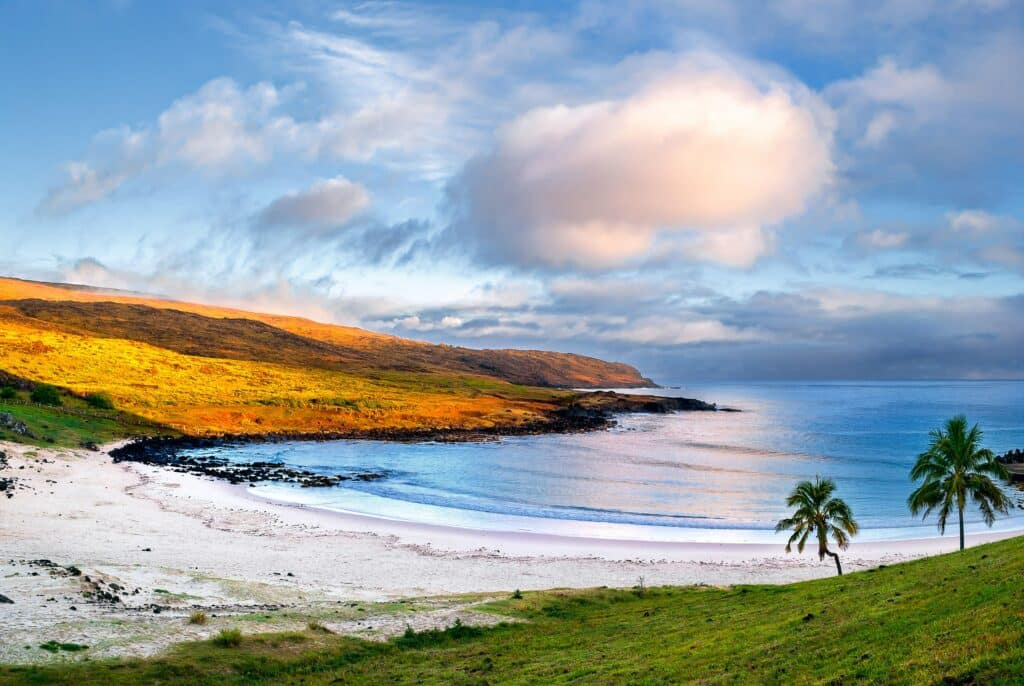
Picture ending a day of awe-inspiring exploration ending on a white coral sand beach on the island’s northern shore that overlooks the warm, clear waters of the Pacific Ocean, with luxurious shade provided by coconut palms brought from Tahiti several decades ago. Anakena has two ahus; Ahu-Ature has a single moai (the first to be raised on the island in modern times) and Ahu Nao-Nao has seven, two of which have deteriorated. Regardless, Ahu Nao-Na is still one of the island’s best-preserved platforms, because these moai remained hidden under the sand when they were felled, which thankfully protected them from weather conditions.
Anakena is not just an idyllic beach with year-round water temperatures approaching 70 degrees. This location, also known as King’s Bay, is thought to be the center of history and culture of Easter Island. It was here that the first king of the island, the Ariki Hotu Matu’a, landed and established the first populated center that gave birth to the Rapa Nui culture.
Travelers can now enjoy one of the most remote beaches on Earth while munching on fresh tuna empanadas, snorkeling the transparent waters, or simply melting stress away on the warm sand completely unplugged.
Orongo Village & Rano Kau Volcano
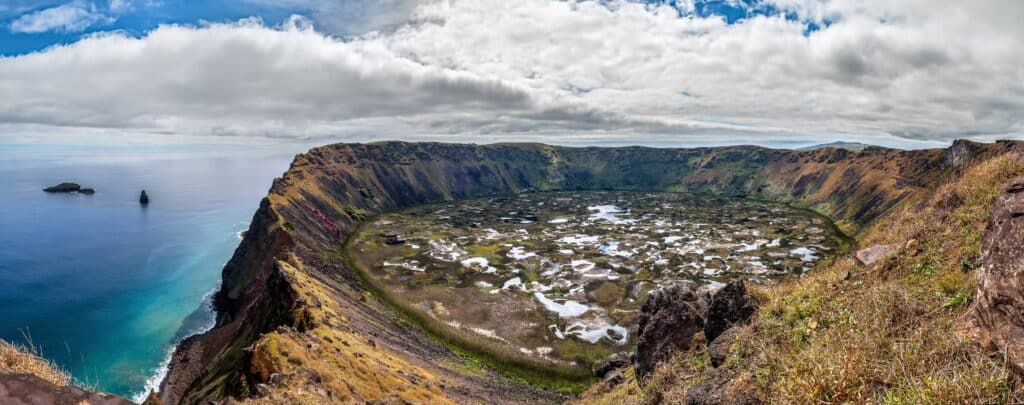
Orongo is a World Heritage status stone village and ceremonial center at the southwestern tip of Rapa Nui, made around 1400 AD from low, sod-covered, windowless, round-walled buildings on the high southwesterly tip of the large volcanic caldera called Rano Kau.
Between the 18th and mid-19th centuries, the village of Orongo was inhabited seasonally by the chiefs and others high up in the ancient tribes, who hoped to collect the first sacred egg of the manutara bird in the months of spring as a way of gaining power in the village – the winner would enjoy rights and privileges over his rivals during his term of office. Participants in this Birdman Cult had to race in what they called the Tangata Manu to bring the first egg back undamaged from the nearby islet of Motu Nui – no small feat, as hunters often fell to their deaths from the cliff face or were killed by sharks. Orongo today has more than 1700 petroglyphs, mainly of tangata manu (birdmen) which may have been carved to commemorate some of the winners of this race.
Almost all the original 53 houses were unfortunately looted and destroyed during different European expeditions and have been rebuilt several times in the last decades. In the 1860s, most of the Rapa Nui islanders died of disease or were enslaved, and when the survivors were converted to Christianity, Orongo fell into disuse and later the crew of the HMS Topaze removed a huge basalt moai known as Hoa Hakananai’a from Orongo.
Below Orongo, a 900-foot barren cliff face plummets down to the Pacific; on the other side, a steep grassy slope leads down to a freshwater marsh inside the high caldera of Rano Kau, the largest crater on the island. Orongo is gorgeous and absolutely unforgettable to explore, but remember to pack some warm clothing – with its height and unprotected position facing the ocean, Orongo can get rather windy and sometimes chilly.
For an authentic adventure to the end of the world that will leave your mind curious and your heart full, consider a trip to Chile with us as well as an extension to Easter Island. You’ll enjoy breathtaking nature, fascinating ancient culture, and the chance to profoundly unwind and reset while connecting to something much greater than yourself.

